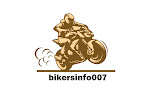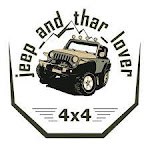The Ultimate Guide to Motorcycles: From Types to Maintenance
If you are a thrill-seeker looking for an adventure on the open road, then a motorcycle may be the perfect vehicle for you. Motorcycles are versatile, efficient, and fun to ride, but they require some knowledge and preparation to ensure a safe and enjoyable experience. In this ultimate guide to motorcycles, we will cover everything from the different types of motorcycles to their maintenance and safety.
I. Types of Motorcycles
Motorcycles come in various shapes and sizes, and each type serves a different purpose. Knowing the types of motorcycles available can help you choose the one that best suits your needs and preferences.
A. Cruiser Motorcycles
Cruiser motorcycles are designed for comfortable long-distance rides. They have a relaxed riding position, low seat height, and a large engine, which gives them a distinctive sound and excellent acceleration.
B. Sport Motorcycles
Sport motorcycles are built for speed and performance. They have a sporty design, a powerful engine, and a riding position that requires the rider to lean forward. Sport motorcycles are ideal for racing and track days.
C. Touring Motorcycles
Touring motorcycles are designed for long-distance travel with a focus on comfort and convenience. They have a large engine, comfortable seating, and ample storage space for luggage.
D. Dual-Sport Motorcycles
Dual-sport motorcycles are versatile bikes that can be ridden both on and off-road. They have a high seat height, long suspension travel, and knobby tires for better traction on unpaved roads.
E. Standard Motorcycles
Standard motorcycles are the most basic type of motorcycle, and they are often used for commuting and city riding. They have a simple design, a small engine, and an upright riding position.
II. Motorcycle Maintenance
Regular maintenance is essential to keep your motorcycle in good condition and prevent breakdowns. Here are some tips for maintaining your motorcycle:
A. Oil Changes
Regular oil changes are necessary to keep the engine running smoothly. Check the owner's manual for the recommended oil change interval and type of oil.
B. Chain Maintenance
The chain is an essential component of the motorcycle's drivetrain. Keep it clean and lubricated to prevent wear and tear. Adjust the chain tension regularly to ensure proper alignment.
C. Tire Maintenance
Check the tire pressure and tread depth regularly to ensure optimal performance and safety. Replace the tires if the tread depth is below the recommended level or if there are signs of damage.
D. Battery Maintenance
The battery is responsible for starting the motorcycle's engine, and it needs to be in good condition. Check the battery terminals for corrosion and clean them if necessary. Charge the battery regularly and replace it if it is more than three years old.
III. Motorcycle Safety
Motorcycle riding can be dangerous, and it is essential to take safety precautions to minimize the risk of accidents. Here are some tips for riding a motorcycle safely:
A. Wear Protective Gear
Always wear a helmet, gloves, boots, and protective clothing when riding a motorcycle. The gear should be made of high-quality materials and fit properly.
B. Follow Traffic Rules
Obey traffic signals and speed limits, and use turn signals to indicate your intentions. Keep a safe distance from other vehicles, and avoid riding in blind spots.
C. Be Visible
Make sure your motorcycle has reflective tape or stickers and use headlights, even during the day. Wear bright clothing, especially at night or in low-light conditions.
D. Stay Alert
Stay focused and alert while riding, and be aware of your surroundings
The Ultimate Guide to Motorcycles: From Types to Maintenance
If you are a thrill-seeker looking for an adventure on the open road, then a motorcycle may be the perfect vehicle for you. Motorcycles are versatile, efficient, and fun to ride, but they require some knowledge and preparation to ensure a safe and enjoyable experience. In this ultimate guide to motorcycles, we will cover everything from the different types of motorcycles to their maintenance and safety.
I. Types of Motorcycles
Motorcycles come in various shapes and sizes, and each type serves a different purpose. Knowing the types of motorcycles available can help you choose the one that best suits your needs and preferences.
A. Cruiser Motorcycles
Cruiser motorcycles are designed for comfortable long-distance rides. They have a relaxed riding position, low seat height, and a large engine, which gives them a distinctive sound and excellent acceleration.
B. Sport Motorcycles
Sport motorcycles are built for speed and performance. They have a sporty design, a powerful engine, and a riding position that requires the rider to lean forward. Sport motorcycles are ideal for racing and track days.
C. Touring Motorcycles
Touring motorcycles are designed for long-distance travel with a focus on comfort and convenience. They have a large engine, comfortable seating, and ample storage space for luggage.
D. Dual-Sport Motorcycles
Dual-sport motorcycles are versatile bikes that can be ridden both on and off-road. They have a high seat height, long suspension travel, and knobby tires for better traction on unpaved roads.
E. Standard Motorcycles
Standard motorcycles are the most basic type of motorcycle, and they are often used for commuting and city riding. They have a simple design, a small engine, and an upright riding position.
II. Motorcycle Maintenance
Regular maintenance is essential to keep your motorcycle in good condition and prevent breakdowns. Here are some tips for maintaining your motorcycle:
A. Oil Changes
Regular oil changes are necessary to keep the engine running smoothly. Check the owner's manual for the recommended oil change interval and type of oil.
B. Chain Maintenance
The chain is an essential component of the motorcycle's drivetrain. Keep it clean and lubricated to prevent wear and tear. Adjust the chain tension regularly to ensure proper alignment.
C. Tire Maintenance
Check the tire pressure and tread depth regularly to ensure optimal performance and safety. Replace the tires if the tread depth is below the recommended level or if there are signs of damage.
D. Battery Maintenance
The battery is responsible for starting the motorcycle's engine, and it needs to be in good condition. Check the battery terminals for corrosion and clean them if necessary. Charge the battery regularly and replace it if it is more than three years old.
III. Motorcycle Safety
Motorcycle riding can be dangerous, and it is essential to take safety precautions to minimize the risk of accidents. Here are some tips for riding a motorcycle safely:
A. Wear Protective Gear
Always wear a helmet, gloves, boots, and protective clothing when riding a motorcycle. The gear should be made of high-quality materials and fit properly.
B. Follow Traffic Rules
Obey traffic signals and speed limits, and use turn signals to indicate your intentions. Keep a safe distance from other vehicles, and avoid riding in blind spots.
C. Be Visible
Make sure your motorcycle has reflective tape or stickers and use headlights, even during the day. Wear bright clothing, especially at night or in low-light conditions.
D. Stay Alert
Stay focused and alert while riding, and be aware of your surroundings


.jpg)
